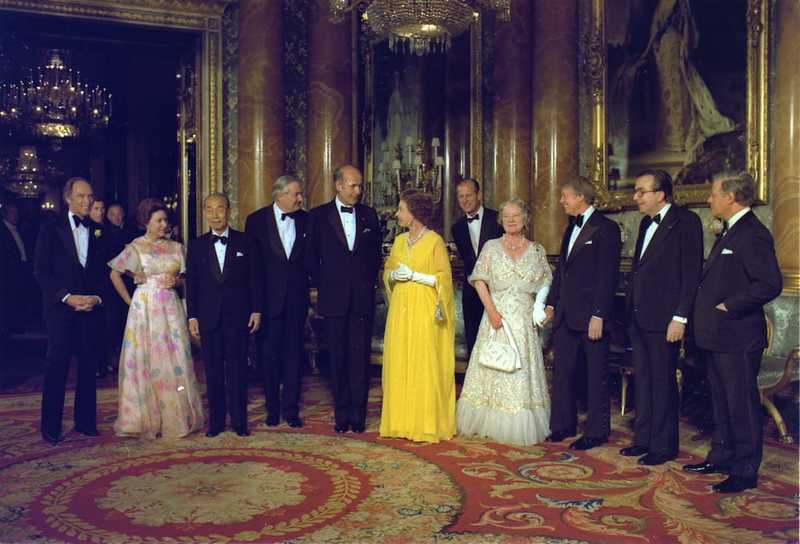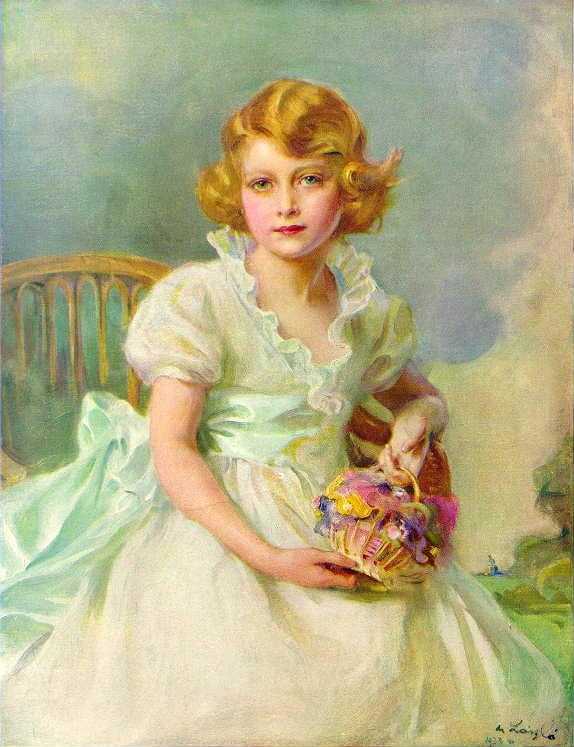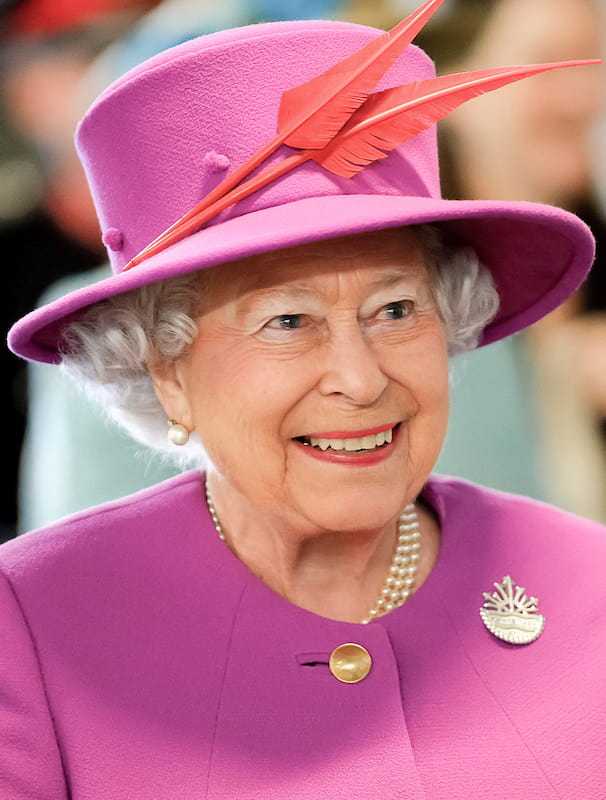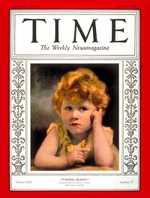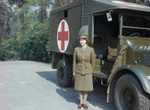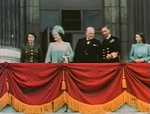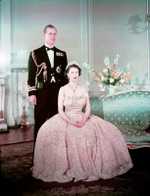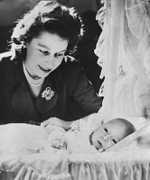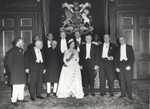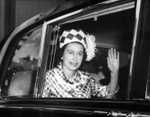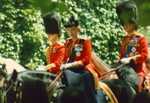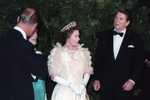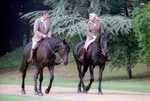1. Early Life
Elizabeth was born on April 21, 1926 in Mayfair, London.
She was the first of two daughters to Prince Albert, Duke of York (later King George VI) and Elizabeth Bowes-Lyon, Duchess of York (later Queen Elizabeth, the Queen Mother). She was baptized by the Anglican Archbishop of York, William Cosmo Gordon Lang, on May 29, 1926, in the private chapel of Buckingham Palace.
She was named Elizabeth, Alexandra, and Mary after her mother, her paternal grandfather’s mother, and her father’s mother, respectively. As a child, she pronounced her name as ‘Lilibet’, which has remained her nickname.
Elizabeth’s education was supervised by her mother, a series of tutors, and Marion Crawford, a Scottish governess who graduated from the Moray House Training College in Edinburgh. Chosen for her youth, rather than her prowess as a scholar, Crawford was expected to teach, but also to provide guidance and companionship for Elizabeth.
Allegedly, the royal family was indifferent to academic and aesthetic values, but Elizabeth was instructed in French, mathematics, dancing, singing, and art. When she was twelve, she was tutored in constitutional history by C. H. K. Marten, Provost of Eton College and studied religion with the Archbishop of Canterbury.
Crawford persuaded the royal family to allow a Girl Guide Company to be set up at Buckingham Palace so that Elizabeth could socialize with children her own age. Also, following a family tradition, Elizabeth was given instruction in riding and became a gifted and eager horsewoman.
2. Early Career
Elizabeth was third in line, after her uncle and father, to assume the throne. On January 20, 1936, Elizabeth’s grandfather, King George V, died.
It was expected that her uncle, Edward VIII would succeed him, but he had fallen in love with Wallis Simpson, a twice divorced socialite. As Wallis had a living spouse, this relationship was contrary to the rules of the Church of England. Edward’s relationship with Wallis had been discouraged by King George V, but Edward was determined to marry her. King George V stayed true to his position as a constitutional monarch and his obligation as the Supreme Governor of the Church of England.
He chose not to make allowances for Edward. As abdication was Edward’s only alternative, he did so on December 10, 1936 and the Duke and Duchess became king and queen and Elizabeth became heir apparent.
In 1940, during World War II, at the age of fourteen, Elizabeth gave her first radio broadcast on the British Broadcasting Company’s (BBC) Children’s Hour, addressing children who, like herself, had been evacuated from the cities. “We are trying to do all we can to help our gallant sailors, soldiers, and airmen, and we are trying, too, to bear our own share of the danger and sadness of war. We know, every one of us, that in the end all will be well.”
In 1943, Elizabeth made her first solo appearance on a visit to Grenadier Guards (GREN GDS), an infantry regiment of the British Army, of which she had been appointed Colonel. Later, she was appointed one of the five Counselors of State in the event her father was unavailable.
In February 1945, eager to be of more assistance to the troops, Elizabeth enlisted in the Women’s Auxiliary Territorial Service (ATS). She trained to become an auto mechanic and truck driver. To become a full-fledged truck driver, she had to pass a test. This involved driving from ATS camp in Camberley to London. Her parents forbade her to take the test, but Elizabeth got into a camouflaged truck, drove through heavy traffic to Piccadilly Circus in London. By the end of the war, she had achieved the rank of Junior Commander of the ATS.
Elizabeth was only thirteen when she first met Prince Philip of Greece and Denmark, but she fell in love and began corresponding with him. In 1946, he proposed, but the family kept it a secret and took her with them on a tour of South Africa, hoping that Elizabeth would forget Philip. While there, she addressed the British Commonwealth. She was twenty-one and pledged to devote her life to the British Empire.
“I declare before you all that my whole life, whether it be long or short, shall be devoted to your service and the service of our great imperial family to which we all belong.”
The king was impressed with Elizabeth’s speech and gave her relationship with Philip his blessing. On November 20, 1947, Elizabeth and Philip were married at Westminster Abbey. Philip gave up his titles and became a British citizen. He became Lieutenant Philip Mountbatten and was later given the name Duke of Edinburgh by the king.
On February 6, 1952, Elizabeth’s father died while she was visiting Kenya in his stead. On June 2, 1953, she was crowned. Elizabeth kept her own name, but instead of ‘Mountbatten’, as her husband expected, she named the royal house, ‘Windsor’, on the advice of her grandmother and Prime Minister Winston Churchill.
Elizabeth’s coronation was televised. She believed new technologies kept the monarch relevant in the twentieth century. She also wanted it to be meaningful. Her gown was embroidered with the symbols of the Commonwealth countries: English Tudor roses, Welsh leeks, Irish shamrocks, Scots thistles, Canadian maple leaves, South African protea, New Zealand silver ferns, Australian wattles, Ceylon and Indian lotus flowers, and cotton, wheat, and jute for Pakistan.
3. Finest Works
From the outset, Elizabeth chose not to be a monarch who sat on a throne waiting to entertain visitors. She visited leaders in their respective countries. Shortly after becoming queen, Elizabeth and her husband visited thirteen Commonwealth countries.
The British Empire had begun changing to a Commonwealth as early as 1931. It had accelerated when Elizabeth became queen. In 1953, she and her husband visited Australia and New Zealand, neither of which had been visited by a British monarch. In 1965, she visited Germany, the first British leader to make a state visit in five decades.
In 1970, she reverted from an ‘off-limits monarch’ to a ‘walkabout queen’ (walking among the crowd) when she visited New Zealand. In 1976, she attended the 200th anniversary celebration of the American’s independence from Britain.
Earlier in 1961, South Africa had left the Commonwealth, but rejoined in 1994. However, in the 1980s, South Africa came under scrutiny for its practice of ‘apartheid’ (policy of segregation based on race). Britain played a crucial anti-apartheid role.
Elizabeth’s customary ‘apolitical’ stance was sorely tested when Margaret Thatcher, then PM, nearly plunged Britain onto the wrong side of history in her general contempt of sanctions and her belief that apartheid was a sin against economic liberalism rather than humanity.
In 1998, peace came to Northern Ireland after years of turmoil between what historians have called the ‘monarchists’ and ‘separatists.’ In 2012, Elizabeth shook hands with ex Irish Republican Army (IRA) leader, Martin McGuinness. She said,
“To all those who have suffered as a consequence of our troubled past, I extend my sincere thoughts and sympathies.”
Elizabeth continues in her efforts to be a stabilizing influence in a world that has seen dramatic changes. Conflicts have come and gone, but she has stood steadfast in her love of her country.
4. Queen Elizabeth II's Legacy
In many families, there is some aspect of dysfunctionality and Elizabeth’s is no different.
Elizabeth’s parents attempted to groom her for her future royal duties, but they could not have foreseen all that might confront her, personally, and as ‘Queen Mother’.
Elizabeth was raised in a manner befitting the socio-politico landscape and is an inspiration to young and old alike. She has consistently opted to remain relevant and forward-thinking. Service to others and encouraging all to work toward better times have been her driving forces.
In 2020, Elizabeth remains the iconic figure behind her family, her country, and the Commonwealth.
“Change is constant. Managing it has become an expanding discipline.” - Queen Elizabeth II, Golden Jubilee, 2002
